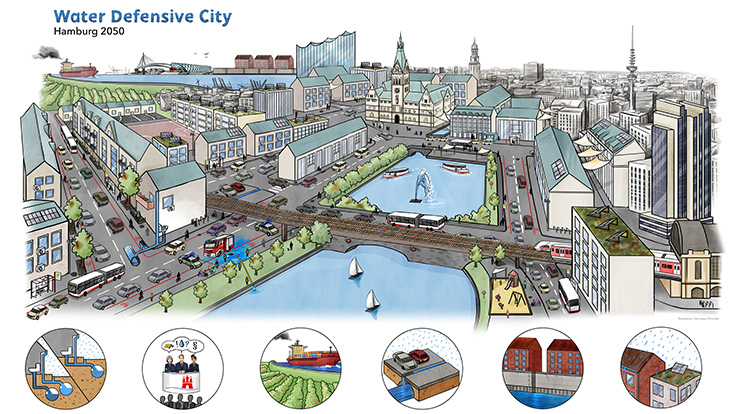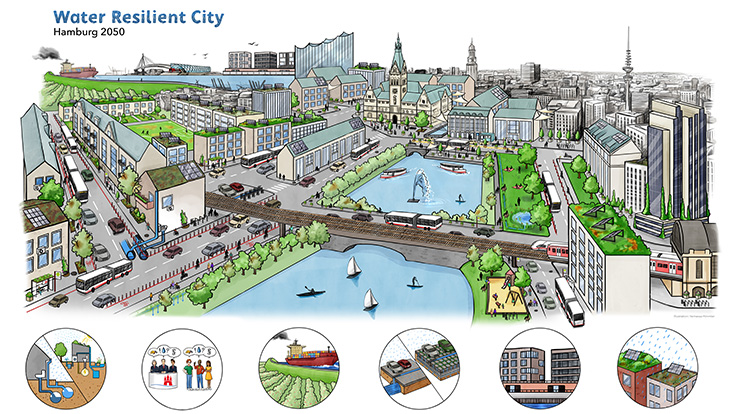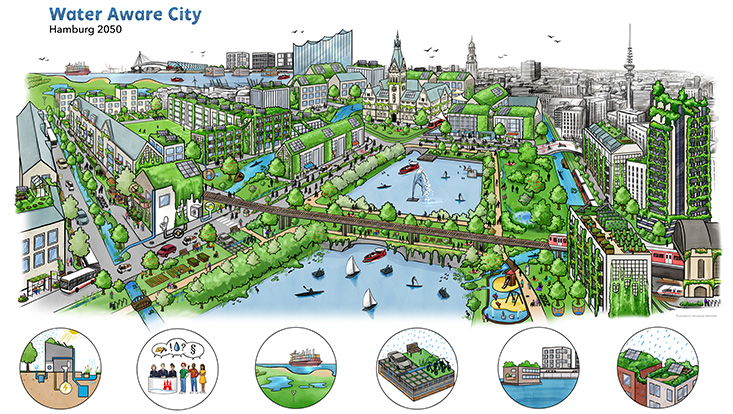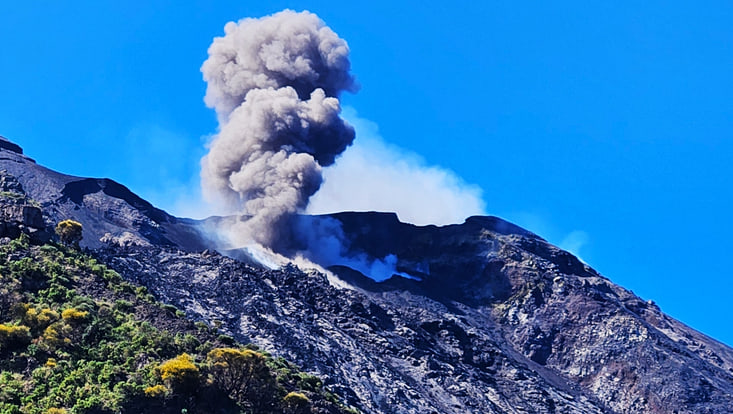A glimpse of Hamburg’s future
18 March 2025, by Franziska S. Hanf
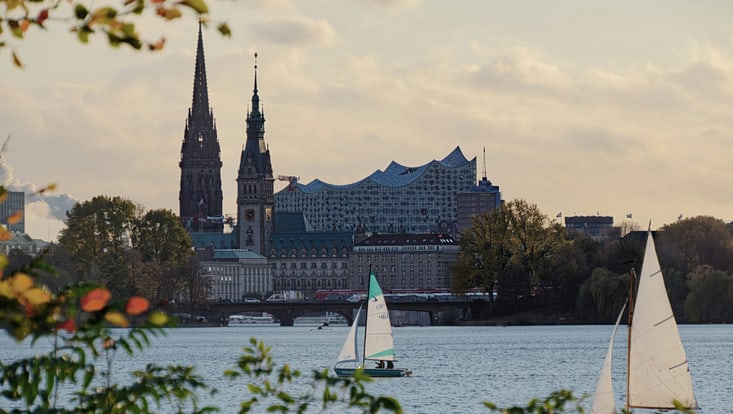
Photo: Niklas Ohlrogge/ Unsplash
Due to climate change, extreme weather events like flooding, torrential rains and droughts will become more frequent. In cities like Hamburg, the citizenry and municipal authorities increasingly face the challenge of coping with these water-related risks. But what would Hamburg look like if it adapted to climate change? And how can we promote a dialogue on this topic?

Dr. Franziska S. Hanf
At the Cluster of Excellence for climate research CLICCS, I’m tackling the question of how climate change adaptation can be achieved. In a project that brings together experts from a diverse range of disciplines – from meteorology to human geography, to urban planning – we asked ourselves: what could Hamburg look like by 2050 in a world shaped by climate change? How would the city have adapted to increased risks of flooding, torrential rains and droughts?
We looked into these questions with regard to three adaptation scenarios: one in which Hamburg only focuses on coping with acute crises; one in which the city adapts to the water-related risks step by step; and one in which it fundamentally changes its approach to water. In seeking to combine our various types of expertise and experience, we determined that art can be an avenue for understanding and learning from one another. Accordingly, we collaborated with an illustrator. The “narrative images” she created show how Hamburg might have adapted to climate change by 2050 in the three different scenarios. They also reflect the multifaceted challenge of adaptation, and how closely connected areas like transport, industry, housing and recreation are in this regard.
In the first scenario, the “water defensive city,” the citizens of Hamburg chiefly view water as a threat. They use dikes and floodwalls to protect themselves and redirect rainwater out of the city. Here, the urban landscape is dominated by gray infrastructure: streets, parking lots, buildings and the widespread use of sealed surfaces. Further, in this scenario, citizens are hardly involved in decision-making at all.
The “water resilient city” reflects initial adaptations to the impacts of climate change. The city is now greener, and water plays a growing role in urban planning. Initiatives to find alternative uses for surplus water are sporadically implemented. Citizens can to a certain extent get involved in shaping their city by submitting their own proposals.
In the final scenario, the “water aware city,” climate change has been consistently taken into account in the cityscape, based on a process in which citizens were actively involved. Hamburg has evolved into a “sponge city” with its own urban water cycle. Via constructed wetlands, urban waterways and ponds, the city provides room to accommodate the water. Its residents use surplus water from torrential rains or flooding for sanitary facilities, as local recreation areas, or to irrigate green areas. In short: they live with the water instead of trying to keep it out.
By exploring potential futures, the scenarios and their visualizations can help make climate change more tangible, promoting sound decision-making when it comes to implementing measures. Above all, we want to show one thing: that these changes offer us the chance to create a new cityscape, one that can not only overcome the challenges posed by climate change but also put the focus on citizens’ needs.
More information
Dr. Franziska S. Hanf is a climate physicist and a researcher in the Cluster of Excellence for Climate Research “Climate, Climatic Change, and Society” (CLICCS) at the University of Hamburg.
Newspaper: This article was first published as a guest article in the Hamburger Abendblatt as part of a monthly series on climate research. Find all articles of the series here. Find all articles of the series here.

